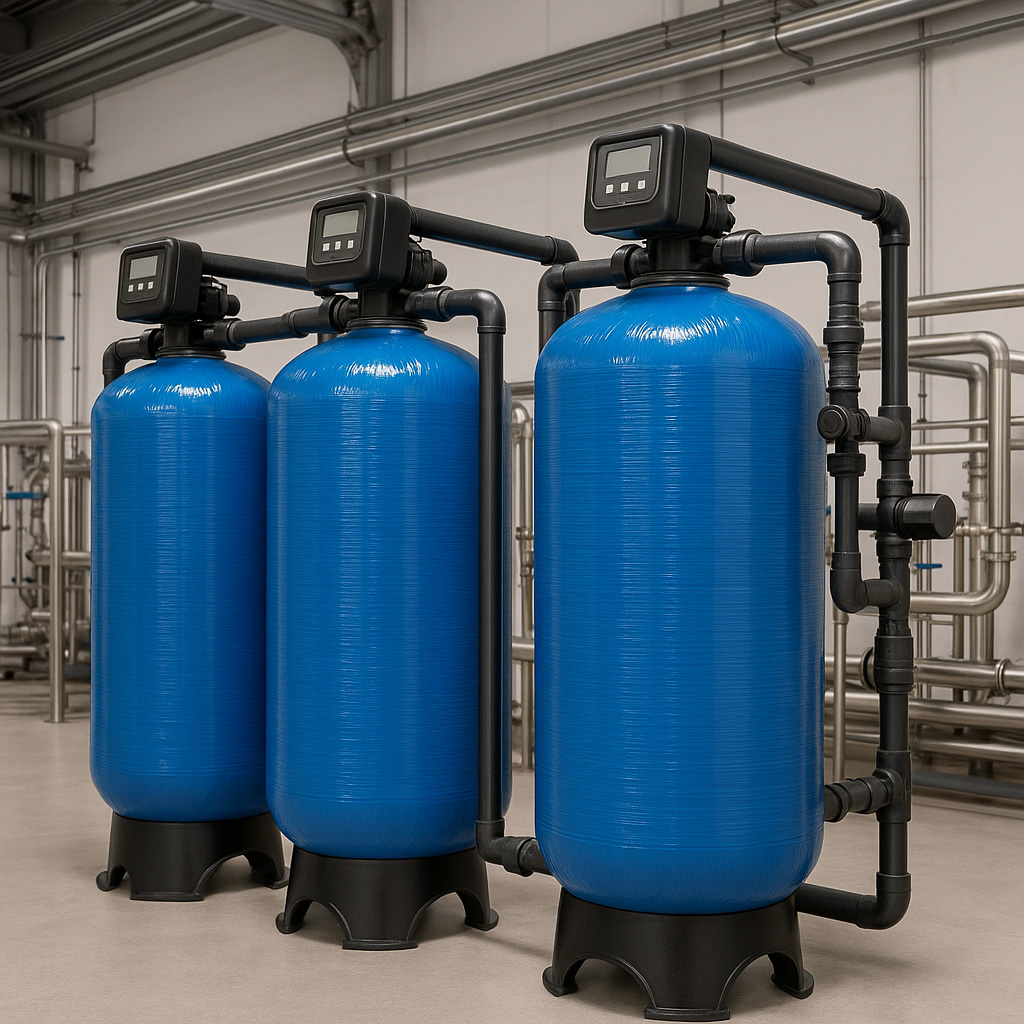PREPARATION OF HIGHLY DEMINERALIZED PROCESS WATER
Water is required at every stage of the electrolysis process, so the key challenge facing the electrolyzer sector is managing its resources to ensure a reliable supply of high-quality water.
Our company offers the only reasonable and eco-friendly solutions, designed and built specifically for the needs of the hydrogen energy sector. We are a Polish company with Polish capital and Polish technological expertise.
Our solutions are characterized by:
- Failure-free and very long operating time. Duo systems.
- Minimal amount of wastewater after the treatment process (approx. 1000 times less than RO).
- Minimal water loss after treatment – approx. 1% (in the case of RO – 40%).
- Minimal energy consumption of the system itself (approx. 0.2 kW/h).
- Any station capacity, but not less than 1.5 m³/h.
High-quality water is required for electrolysis (typically below 0.1 microsiemens per centimeter (μS/cm)).
As a result, purified water is crucial not only for process water but also for utility applications such as cooling or steam production.

| Commonly used process water preparation technology for hydrogen production RO – reverse osmosis |
TARGET TECH HYDRO HIGH TECH process water preparation technology for hydrogen production using a two-stage ion-exchange method |
|
|---|---|---|
| Water quality | > 0.1 μS/cm | > 0.1 μS/cm |
| Energy consumption – m³/h | ~ 2.5 kW/h | 0.2 kW/h |
| Operation | Second purification stage - ion-exchange stage regeneration once per month |
Second purification stage - ion-exchange stage regeneration once per year |
| Wastewater amount | 45% | 1% – 2% |
| Cost comparison – system economics with increasing flow scale | Costs increase proportionally with the scale of the project. | Considering over 10 times higher energy consumption and over 40 times more wastewater produced by the RO system, the advantage of the ion-exchange system is clear. |
| Quality assurance and system durability | General disadvantages of systems based on mechanical devices. Unpredictability of water supply interruptions. | Fully automatic and maintenance-free system, 10-year warranty, designed for very long operating cycles. |



